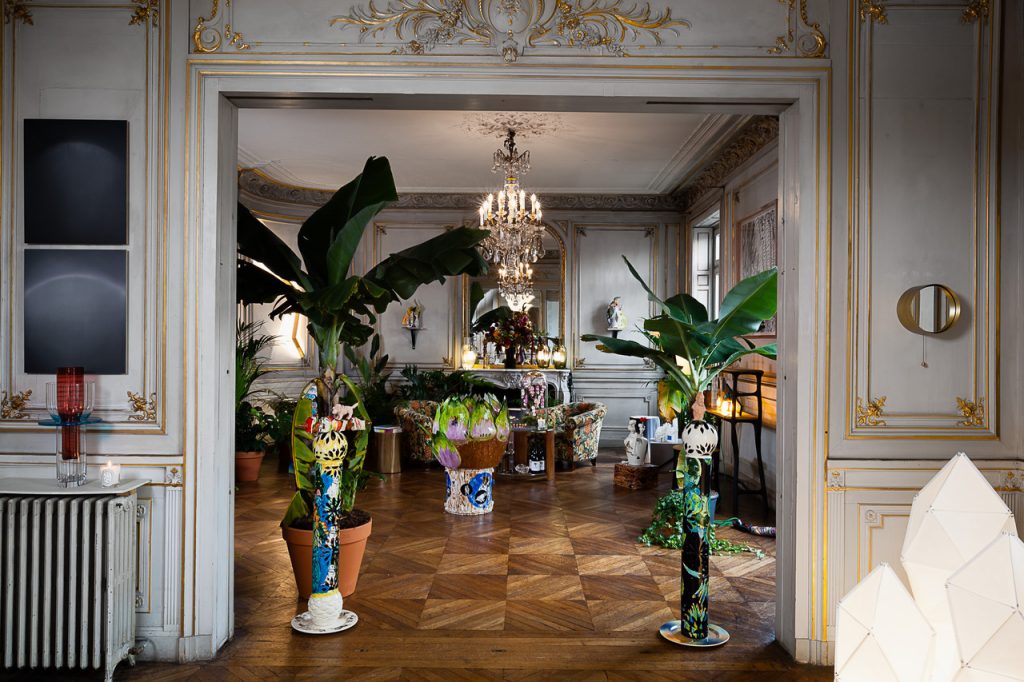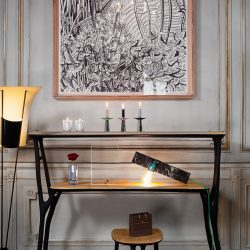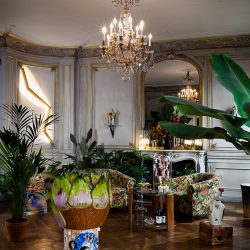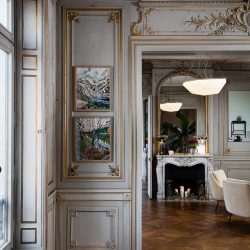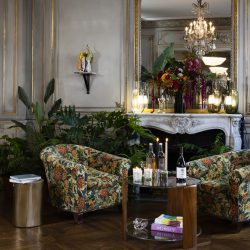Florentine and Alexandre Lamarche-Ovize at Private Choice
10.20.2017Interview with Florentine and Alexandre Lamarche-Ovize for memento
“Florentine and Alexandre Lamarche-Ovize have been working together for over a decade. Their drawings, paintings and sculptures testify to the duo’s interest in real life, the insignificant and the everyday – from which they never cease to harvest elements to create their work. For Lamarche-Ovize, figures, images and references are superimposed and circulate haphazardly and shamelessly, jumping from one medium to the next, from paper to ceramics. The duo almost always make everything themselves, four-handedly; they confront and assert their love of objects, hybridisation and breaking down barriers; they revel in their taste for décor, pattern and the decorative and love being surrounded by other artists and artisans. Their work was recently exhibited in New York, Mexico, Spain and France and was the subject of a monograph published in The Drawer in 2017. As guests for the fifth edition of Private Choice, envisioned by Nadia Candet, Lamarche-Ovize have transformed the first room into a winter garden as the backdrop to a dozen recent drawings and ceramic pieces. With The Drawer they review their work and the pieces selected for exhibit at Private Choice.”
Drawings structure your practice and your work. What do they mean to you?
For us, drawing is the starting point for all our art, if not all our activities. It is a universal language that is humble and accessible to all. It can be undertaken anywhere and under any circumstances. It covers a variety of realities and materialities: it is as much the pattern, map and illustration « of ennui », that you sketch just to pass the time as it is a more complex and elaborate drawing that questions the story behind it and its composition.
Pop, kitsch, grotesque, classical, exuberant, amusing, etc., your visual narrative borrows from a variety of styles and registers and subsequently can be described in lots of ways. Which label do you think best fits the bill?
Grotesque – because of the plurality of its origins and expressions. It fits us because it is both exaggeration and ornament; character and motif. It could be a drawing or a volume. It is a serious style but doesn’t take itself too seriously and it becomes amusing as a result of its excess. It is also a style that has crossed the centuries and demands to be taken up again and reinterpreted. It represents a space for transition; décor and a frontispiece.
Paper, ceramics, cardboard, a wall… you multiply the pathways and the to-ing and fro-ing process between all potential drawing mediums. Which is your favourite?
Notebook paper, with a yellow tinge and the little grid pattern that you find in school notebooks. The notebook is where the first idea, the first line, the first sketch comes to life. There’s always something right about it, the promise of a project to come, a desire, something that you yearn for that would surpass all prior achievements. At the same time though, this initial drawing is fragile, clumsy and a little illegible. It can only be understood later on when it has gone through all the necessary steps and transformations (scale and technique changes, the journey from screen-print to volume, etc.).
Notebooks are the starting point, the weft and motif behind our pieces, collages and ceramics. We sometimes exhibit extracts on large rolls that follow each other chronologically. This allows us to show the common thread behind our work and how it all comes together. And the starting point: a quick drawing. So powerful. Not gratuitous, at all.
One of your last series, created after visiting the revamped dioramas at the Natural History Museum in New York, is called « Natural History Pattern ». Why this title? What is the importance of this motif in your work?
The challenge of this series, created in 2016, was to lose the animal in its setting, to make the subject pale in favour of the motif so that the motif becomes the subject of the piece. Hence the title « Natural History Pattern ».
The motif is key for us because it reminds us of the work of famous artists that have had an impact on our work. William Morris, for example, the founder of the Arts & Crafts movement, who created tapestry motifs in his factory and considered art and design as « spirit lifters » in life both socially and otherwise. Using this motif allows us to revisit his theories and put them into practice. That’s why our work always toys with the decorative; motifs and know-how. That’s the case with our ceramic vases for example or the Surtout chandelier we created last year with We do not work alone.
Flowers have dotted your work since you started working together: why is that, and why are nature, gardens and landscapes so important to you?
Flowers are as much a noble motif in classical art – the Flemish school of still life with vases of flowers and crowns for example – as it is a motif for evening art classes. It is the motif of the Decorative Arts par excellence. They can also be substitutes, portraits – as for Fantin-Latour in his paintings of corners of tables. They are motifs and ploys. A flower can also be used to represent a garden, just on its own.
The garden represents an entity, or the classification of several motifs, it can organise the composition of various motifs.
The landscape is, in our case, more urban: it is the little pavilion-style house surrounded by vaster entities that can also recall the working-class garden. The latter could be a wonderful metaphor for our desires in our work: a little square piece of land in which one can escape, a place for growing things and for flowers, somewhere that also has a vital function.
What’s the link between the garden views at Varengeville-sur-Mer done in charcoal and the colourful ceramic pieces made in Mexico that are exhibited at Private Choice?
As usual our beloved motif: flowers painted on the Mexican vases were seen and drawn during our trip to Mexico; the charcoal drawings of Varengeville are a tribute to the Arts & Crafts movement, inspired by the gardens and featuring a floral motif. These great charcoal drawings could be the prototypes for the creation of other vases.
Your work, a continuously creative process, invites the viewer on a genuine plastic investigation: do you have the key to unlock this door?
The key, well no, because it is research in progress, an investigation of people who mark our work, like lives and points of view to be rediscovered – those of William Morris; Elisée Reclus, the geographer of the Commune; Rosa Bonheur… Their biographies intertwine with ours and in the creation of our own story via a collection of objects.
« All we need » is the title of this Private Choice event that is hosting you this year. And you, what do you both need?
Just as in the novel by Joris-Karl Huysmans, À rebours, whose hero lives alone surrounded by his favourite books and works of art, we need to surround ourselves with objects and public figures; we need to learn new skills that bear witness to our travels and to the people we have met along the way that have shaped our own narrative, which is under permanent construction.
diptyque is the official partner of Private Choice, from the 16th to the 22nd October.
Lamarche-Ovize, Inventaire, ed. The Drawer, 2017 & The Drawer vol.13 – Amour, to be released mid-October 2017, available at Private Choice and online via www.thedrawer.net.
- Florentine et Alexandre Lamarche-Ovize chez Private Choice, à Paris, du 16 au 22 octobre.
- Florentine et Alexandre Lamarche-Ovize chez Private Choice, à Paris, du 16 au 22 octobre.
- Florentine et Alexandre Lamarche-Ovize chez Private Choice, à Paris, du 16 au 22 octobre.
- Florentine et Alexandre Lamarche-Ovize chez Private Choice, à Paris, du 16 au 22 octobre.


